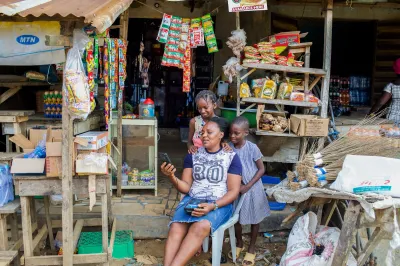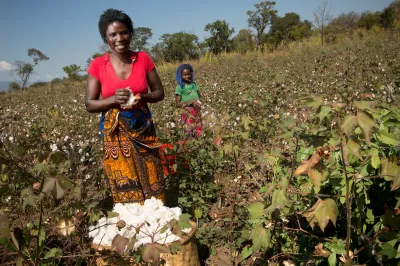Cultivating Opportunities for Women in Agriculture
Women are essential contributors to agriculture around the world. In developing countries, women make up approximately 40 percent of the agricultural labor force. Yet women often have less access than men to necessary resources, services, time, and markets, hindering their productivity. Findings from CGAP’s national surveys of smallholder households in Mozambique and Tanzania suggest that barriers may also be preventing women from diversifying their sources of income both within and away from agriculture. Women’s lack of access to formal financial services may be one of these barriers.

Women are less likely to diversify their incomes
Globally, evidence suggests a tendency for rural households to diversify away from agriculture as their wealth increases. As productivity in agriculture rises, household income and the demand for nonagricultural goods and services also grow. This leads many rural households to diversify their livelihoods into nonagricultural activities to complement or steady their incomes, enabling them to do things like pay for school fees, get through bad harvests, or deal with shocks.
CGAP’s national smallholder surveys in Mozambique and Tanzania point to a similar trend occurring at the individual level, but at a very different rate for men and women. As household wealth increases in these countries, men diversify out of agriculture at a much higher rate than women do. Women continue to be more dependent on agriculture despite the potential for greater productivity in other sectors, indicating that they face more obstacles to exploring different livelihoods. Among poorer smallholder households, about the same percentage of men and women report agriculture as their main source of income; however, significant differences arise among richer households. In Tanzania, 56 percent of men and 65 percent of women in such households report agriculture as their main source of income. The disparity is even greater in Mozambique, where the numbers are 32 percent for men and 52 percent for women.
Women also diversify less within the agricultural sector than men do. As wealth increases in Tanzania, the percentage of both male and female farmers who acquire livestock increases, but men consistently own more livestock than their female counterparts. In the case of Mozambique, significantly more men than women own livestock, and the gender gap increases with wealth by 6.5 percentage points.
The role of financial services and regulation
In both Tanzania and Mozambique, female smallholders appear to be as active as men in the use of financial services, when one considers both formal and informal finance mechanisms. In Mozambique, 30 percent of smallholders have an active formal or informal financial account. This percentage rises to 34 percent in the case of Tanzania.
Men regularly use formal financial services; however, women rely almost exclusively on informal options, such as voluntary savings and loan associations, money guards, moneylenders, family, and friends. Women’s dependence on informal finance implies that it is harder for them to access financial products that informal providers do not offer, such as insurance and long-term loans. This, in turn, limits their financial options to make important investments and improve livelihood management strategies. It likely also contributes to a lower ability to diversify their income portfolios.
The opportunity exists for financial services providers to design products and delivery channels that allow women to seize opportunities and thrive beyond what current financial options make possible. For example, savings and loan products could be tailored to women’s livelihoods to enhance their productivity and increase their incomes. As women’s income increases, financial services providers could offer financial products that enable women to diversify into new livelihoods with further earning potential. For example, agro-input microfranchising networks, such as Krishi Utsho in Bangladesh, can help women diversify by increasing access to one-stop-shop input facilities.
The national surveys also show that smallholders who use digital financial services are more educated than those who do not. Among smallholders who have mobile money accounts, fewer women use their accounts to access additional digital financial services like credit and savings products. Policy makers must take note of such results, as regulatory enhancements concerning education and age of marriage can aid in equipping women with the knowledge and confidence to pursue financial and digital literacy.
Policy makers must also consider the constraints women face in land and property rights, which prevent their capacity for growth within the agricultural sector in many developing countries. Women generally own less property than men, and women’s property rights are usually less secure. Studies have shown that women working in agriculture with insecure property rights tend to make farming decisions that negatively affect their land productivity to avoid losing claim to their land. Since property is essential for agricultural production and serves as the main form of collateral for loans, unequal marital property regimes and inheritance practices directly impact women’s access to credit and inclusion in finance.
Going forward
Additional quantitative and qualitative surveys and approaches are needed to deepen our understanding of why women smallholders are not diversifying within and away from agriculture as much as their male counterparts. What role do social norms play? How do spending priorities differ by gender? What we do know for sure is that financial services providers and government regulators must prioritize financial services for women to make significant advances in financial inclusion.




Add new comment